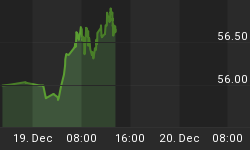It is unwise to be too sure of one's own wisdom. It is healthy to be reminded that the strongest might weaken and the wisest might err. - Mahatma Gandhi
Today, we will not pick on the Fed chairman. We promise. Cross our hearts and hope to die.
We are moving on. The chairman will get whatever the Fates have prepared for him. God help him.
But the evil that men do lives after them. As the Caesar of central banking continues towards his reward, the world's financial system lunkers on too - towards correction.
"For the first time since WWII, the world is in the grips of a synchronized global economic downturn," writes Dr. Kurt Richebacher. "We are looking for financial turmoil in the United States of a gravity without precedence in the whole postwar period."
Greenspan spent the last 16 years puffing up not only his own reputation, but also the biggest credit bubble ever.
Not that we have any special information on the subject, but we take it for granted that what inflates is also subject to deflation. Central banking in the time of Greenspan became such a popular sensation that it seemed to many that it was a permanent success. The Greenspan Fed had increased the supply of credit more than all the Fed chiefs and Treasury secretaries back to the time of Washington. Nobody complained, as the 'inflation' went directly into stock prices. It began to look as though the science of central banking had been mastered, and the business cycle had been brought to heel too. For, had not Greenspan proven that he could increase credit without triggering inflation? And didn't that give him the ability to head off a recession by cutting rates quickly?
But nothing fails like success. Or, as economist Hyman Minsky pointed out, nothing can be more de-stabilizing for an economy than a long run of macro-economic stability.
American entrepreneurial capitalism, combined with enlightened Greenspan central banking, seem to have taken the risk out of stocks and paper money. The Fed seemed capable of managing both for the benefit of long-term investors. Is it any wonder they bought and borrowed when it made sense - in the '80s - and continued to buy when it didn't - in the '90s?
Both the credit bubble and Mr. Greenspan's own bubble reached their zenith about a year ago, by our reckoning. Both now seem to be losing gas.
Gold hit its lowest point since the early '70s about the very same time that Mr. Greenspan's stock seemed to peak out, with the appearance of "Maestro", Bob Woodward's insipid hagiography of the Fed chairman, in November of 2000.
Mr. Greenspan had become the biggest news story in the entire world. Sure, there were probably a few primitives in fishing villages in the New Hebrides who had never heard of the man. But to the world's intelligentsia economica, the chairman of the Federal Reserve system was 'household,' as well known as Ronald McDonald, Cher or Jim Beam.
On the day the book came out, you could have bought an ounce of gold for $264. But it would have cost you $11,152 to buy the whole Dow. That was a big change from the late '70s. Then, the Dow and an ounce of gold changed hands for about the same price.
But since the book "Maestro" appeared, the Maestro himself has been in a bear market. More and more often you see him criticized in the press. Unlike Kozlowski and Blodget, he has not been blamed for stock market losses - yet. But the longer the slump continues...and the closer the U.S. economy edges towards deflation... and the more stock prices fall...the more people will wonder about the curious bubble the Fed chairman wrought.
Mr. Greenspan's stock does not trade publicly and is not quoted on any exchange. But Daily Reckoning readers may still profit as it goes down. Gold is the nemesis of managed currencies. It is what investors turn towards when they lose faith in the managers. Since the appearance of "Maestro," the price of gold has risen 20%. The Dow has fallen nearly 30%. These are trends we expect to continue at least until Mr. Greenspan's reputation is fully corrected.
"Gold is heading for $1,000," writes my old friend Martin Spring. Over the last 12 months gold has risen 15% against the dollar. Gold mining stocks, after taking a beating this past summer, are back up about 40% since January.
"In recent years," Martin continues, "there's been an almost-perfect negative correlation between US shares and the gold price...which means that if Wall Street continues to fall, it's almost certain bullion will rise."
Martin notes that global demand is currently exceeding mine and recycling production by about 400 tons a year. So little money was spent on new exploration and mine development in the last decade, production will probably fall further, until the price of gold hits $400 - $500 an ounce, high enough to encourage additional investment...
But why would gold go up in a general price deflation?
"Gold can also prove to be a good defensive investment in deflationary times, as it was in the '30s," Martin explains. "Over the past three years the bullion price has risen 23% despite a fall in inflation both actual and anticipated by the markets (as shown by the declining differential between the yields of fixed and inflation-protected government bonds.)"
Gold is real money, after all. It is decent money when Fed chiefs prosper. It is even better when they don't.
Your correspondent,















